There was a time when we discussed “website updates” with a client or prospect, it meant content updates. Prior to content management software (CMS) packages, clients would depend on the developer to make content changes look appropriate on a web site. And even in the first years of CMS, clients would find the software intimidating and would depend on us to make changes.
Today we make content changes regularly only for a few clients. Usually this is because the client has several people responsible for content changes and wants to control the work done on this, or the client does not have enough staff to have someone in house comfortable with making regular changes. If it’s an extensive change that incorporates design changes of some sort, we’re usually asked to do it, but even there that is not always the case. That goes to show how much more editing knowledge is out there in the workplace, and how much easier the CMS options are. CMS still has a way to go, but CMS progress is obvious.
Today when we discuss “website updates”, it is more likely about the structure and mechanics of a CMS site. For example, if somebody isn’t knowledgeable about the plugins, theme, CSS, and functionality options of their WordPress web site, they will hire us to manage the updates of those components. WordPress primary software updates 2-3 times a year, and many of the plugins and themes update at LEAST that often. The greater the functionality of the WordPress web site, the more plugins are likely used, and more customization of CSS. A website shouldn’t fall far behind in software updates, that leads to security gaps and functionality flaws… but sometimes WordPress updates cause conflicts in various software pieces, and that needs to be rectified to prevent a loss of functionality as well.
And there is the maintenance and monitoring of security software. For our WordPress clients, we review various kinds of attacks, block IPs based on such activity, review user name attempts, run security scans daily, etc. It’s required regularly.
We still make both content and system updates on our WordPress websites, but the ratio continues to change more towards the systemic updates.
